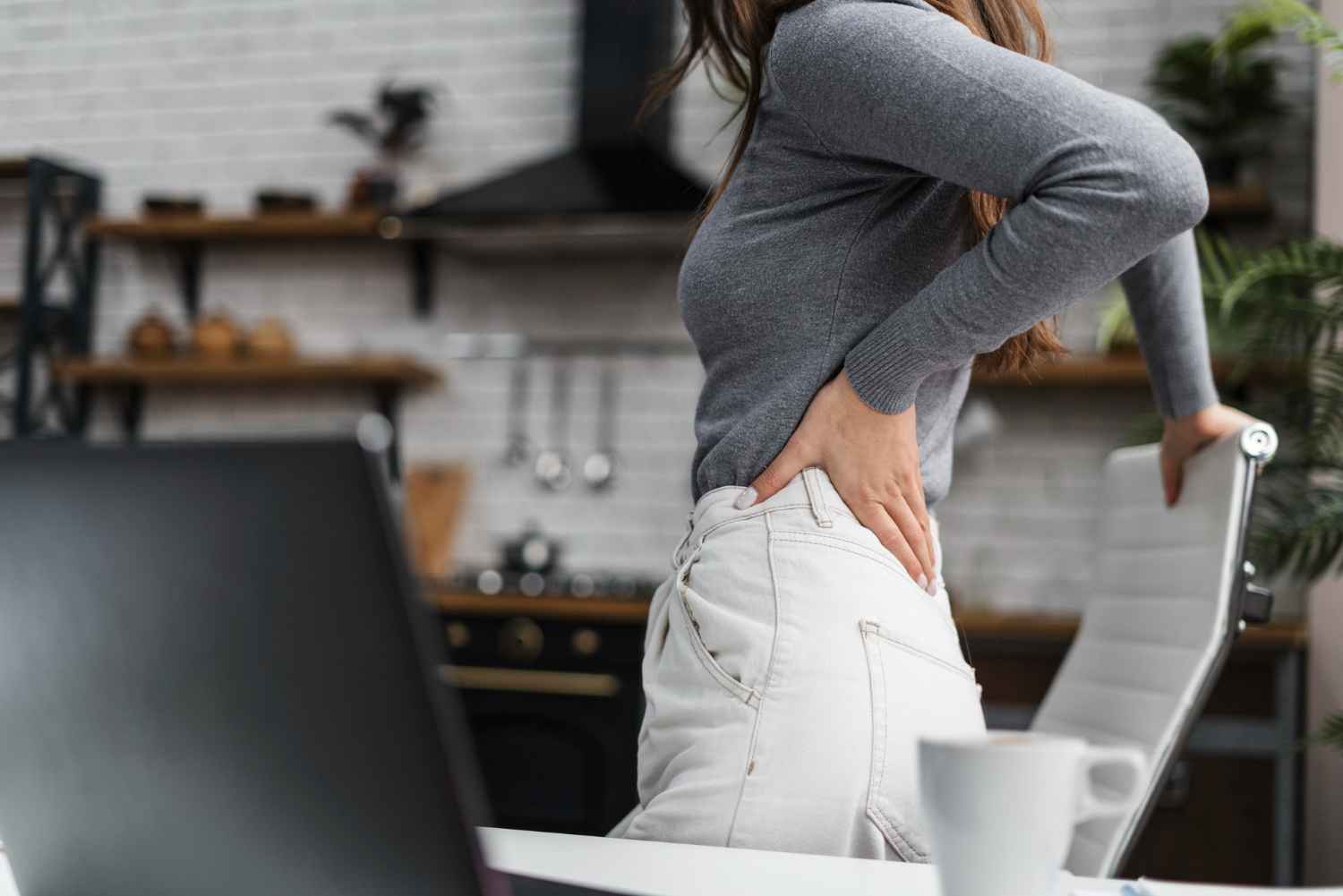Ever felt a sharp ache along the outside of your hip after a long day on your feet, or maybe after a week of pushing through intense workouts? You’re not alone. Lateral hip pain or pain on the outside of your hip is surprisingly common, especially among runners, cyclists, older adults, and even people who simply spend long hours standing or walking. But while many shrug it off as just another “overuse issue,” that nagging outer hip discomfort may be trying to tell you something more specific.
What if the pain isn’t just muscle fatigue or a pulled tendon? What if it’s hip bursitis, an often misunderstood condition with a very real impact on your daily life?
Recognizing hip bursitis early on can be the difference between weeks of worsening pain and a manageable, full recovery. Understanding the signs, causes, and treatment options can put you back on track, without limping through your day.
What Exactly Is Hip Bursitis?
Let’s peel back the anatomy for a second. Between your thighbone and the overlying muscles sits a tiny, slick, fluid-filled cushion called a bursa. Its whole job is to let tissues glide instead of grind. When everything’s humming, you never notice it’s there. But inflate that sac with inflammation, boom, bursitis.
The hip has several bursae, yet the one that grabs the spotlight is perched on the bony knob we call the greater trochanter. Irritate that spot and you’ve unlocked greater trochanter pain, a fancy phrase doctors use when patients point to the side of their hip and say, “Right here. It burns.” Some clinics lump all these outer-hip woes under “greater trochanteric pain syndrome.” Whatever label sticks, the sensation is the same: a nagging soreness you can pinpoint with one finger.
Why Does It Happen? (Spoiler: It’s Not Just Age)
- Repetition, repetition, repetition. Miles of running, hours of stair climbs, countless pedal strokes on a bike, each pass rubs that bursa like a credit card swipe. Sooner or later, the swipe fees add up.
- Pressure in all the wrong places. Fall asleep on your favorite side, binge an entire season on the couch, perch on a barstool that’s one notch too high. Constant compression leaves the bursa begging for mercy.
- One-off trauma. Miss a step, land hard on the pavement, or take a sideways tackle in a weekend soccer match, and the impact sparks immediate swelling.
- Hidden saboteurs. A pelvis tilted by a leg-length difference, arthritic changes in the spine, or tightness along the infamous IT band all shift forces toward the trochanter. Think of it as poor alignment in a car: eventually, a tire (your bursa) wears unevenly.
- Posture gone rogue. Slouched standing, “duck feet” walking, over-striding on a run, subtle quirks add up until the bursa can’t keep the peace.
How Do You Know It’s Hip Bursitis?
- Bull’s-eye pain. Press a knuckle against the bony bump on the outside of your hip. If it makes you gasp, a red flag waves.
- The flop test. Lie on that same side. If you last less than a minute before rolling away in defeat, note it.
- Motion moments. Climbing stairs, pushing off a low couch, or simply walking uphill can trigger a stab of lateral hip pain.
- Creeping ache. Sometimes the pain creeps down into the outer thigh or sneaks into the buttocks, masquerading as sciatica.
- Subtle swell. A mild puffiness might hover over the trochanter, though it’s often hidden beneath layers of muscle and tissue.
Getting a Name for Your Pain
Most cases won’t require a battery of high-tech scans. Instead, a clinician will:
- Listen: When did it start, what made it worse, and what have you tried?
- Press and move: They’ll palpate that bony ridge, rotate your leg, maybe have you balance on one foot.
- Peek inside (if needed): X-rays rule out arthritis or fractures; MRIs spotlight bigger issues like tendon tears. But if your story screams bursitis, imaging often stays in the toolbox.
The Road Back: Treatment Without the Guesswork
Rest but don’t rust. Dial down the mileage, switch high-impact workouts for swimming or gentle cycling, and nix side-lying sleeping for a bit. Yet keep the joint moving through pain-free ranges; total immobility stiffens the hip and feeds the fire.
Ice, then heat. First 48–72 hours: ice packs, 15 minutes, three times a day. After initial swelling calms, a warm compress or hot shower pre-exercise can loosen tight tissue.
NSAIDs, respectfully. Ibuprofen or naproxen can tame inflammation, but pair them with food and short dosing windows; your gut will thank you.
Physical therapy is your secret weapon.
- Stretch what’s tight: IT band, hip flexors, quadriceps.
- Strengthen what’s weak: gluteus medius and minimus (tiny but mighty stabilizers), deep core, and low-back muscles.
- Retrain movement: A PT or athletic trainer may analyze your gait, adjust your running cadence, or tweak how you squat and lunge. Small changes, big payoff.
Corticosteroid injections. When pain refuses to budge, one precise shot into the bursa can feel miraculous. Relief may arrive within 24–48 hours and last for months. It’s not a cure, but it buys time for rehab to do its job.
Mobility aides. A cane, trekking poles, or crutches can unload the hip during nasty flare-ups. Temporary, yes, but smart tools help you stay active without adding insult.
Surgery is the last, unlikely chapter. Only when every other page of treatment has been read and the pain story hasn’t changed do surgeons consider removing the inflamed bursa. For most people, that chapter never needs writing.
Keep Bursitis Off Your Calendar
- Warm up. Five minutes of dynamic leg swings, lunges, or mini-band walks wake the hips before they do heavy lifting.
- Build a glute shield. Strong glutes absorb impact, stabilize the pelvis, and spare the bursa. Deadlifts, clamshells, single-leg bridges, choose your weapon.
- Mind your mattress. If you’re a side sleeper, wedge a pillow between your knees to keep your hips level.
- Switch positions often. Desk jockey? Stand up hourly. Retail associate? Perch on a stool during breaks.
- Watch the weight. Extra pounds magnify pressure through every step. Even a modest loss lessens joint load.
When It’s Time to Call a Professional
- You’ve iced, rested, stretched, yet the greater trochanter pain keeps shouting.
- Pain wakes you at night or makes dressing impossible.
- The area turns red and hot, or you develop fever signs that an infection may have caused the party to crash.
- Your walk looks more like a limp and less like a stride.
Bringing It All Together
Outer-hip aches can feel mysterious. One day you’re fine, and the next, your jeans brush the skin, and it flares. But beneath the soreness often lies a simple storyline: irritated bursa ➜ inflammation ➜ pain. Treat it early, move wisely, and the ending is usually happy. Ignore it, and well… let’s not go there.
Upswing Health blends AI-powered symptom checks with instant access to certified athletic trainers and orthopedic physicians who love nothing more than helping you kick hip bursitis to the curb. So if that dull burn along your side has overstayed its welcome, don’t white-knuckle through another day.
Reach out to Upswing Health now, reclaim your stride, and feel the difference in care that moves with you.
FAQs
Is hip bursitis the same as ordinary inflammation?
Yes—bursitis literally means inflammation of a bursa. The catch is where the inflammation sits and how persistently you irritate it.
Can I manage it with Upswing's digital tools?
From tailored exercise videos to real-time coaching, Upswing's virtual care toolkit guides you through safe recovery steps with no waiting room required.
Which exercises should I avoid while it heals?
High-impact running, side plank leg lifts, deep lunges on hard floors, and stair sprints can all aggravate the bursa until pain subsides.
How long before I'm pain-free?
Many people feel marked relief within two to six weeks of consistent rest and rehab. More stubborn cases may stretch beyond three months, but full recovery is the rule, not the exception.



